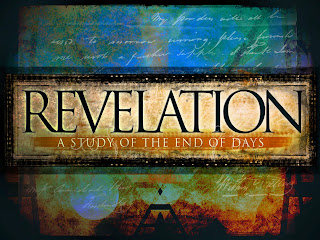Saturday, July 5, 2014
Premillennialism
Premillennialism
Premillennialism teaches that the Second coming will occur before a literal thousand-year reign of Christ from Jerusalem upon the earth. In the early church, premillennialism was called chiliasm, from the Greek term meaning 1,000, a word used six times in Revelation 20:2-7. This view is most often contrasted with Postmillennialism which sees Christ's return after a golden "millennial age" where Christ rules spiritually from his throne in heaven, and Amillennialism which sees the millennium as a figurative reference to the current church age.
Background
Premillennialism was the most widely held view of the earliest centuries of the church. Philip Schaff has said, "The most striking point in the eschatology of the ante-Nicene Age (A.D. 100-325) is the prominent chiliasm, or millenarianism, . . . a widely current opinion of distinguished teachers, such as Barnabas, Papia, Justin Martyr, Irenaeus, Tertullian, Methodius, and Lactantius." (History of the Christian Church, Scribner, 1884; Vol. 2, p. 614)
Premillennialism began to die out in the established Catholic Church during the life of Augustine (A.D. 354-430). Chiliasm was suppressed by the dominant Catholic Church, but survived through various "fringe" groups of Christians during the mediaeval period. During the Reformation, Anabaptists and Hugenots helped to revive premillennialism and it was adopted among some Puritans during the Post-Reformation era.
The greatest development and spread of premillennialism since the early church came in the late 1800's - early 1900's with the rise of U.S. Fundamentalism and Dispensationalism. Starting in the British Isles and spreading to America, premillennialism (in its dispensational form) has become prominent in the Evangelical faith.
Two varieties of premillennialism
Premillennialists fall into two primary categories: historic premillennialism and dispensational premillennialism. Historic premillennialism is so called because it is the classic form which may be found in writings of some of the early church fathers (mentioned above), although in an undeveloped form. Dispensational premillennialism is that form which derives from John Nelson Darby (1800-1882) and dispensational theology. It is dispensational premillenialism that first taught the notion of a pre-tribulation rapture.
Historic premillennialists reject the idea of a pre-tribulation rapture and the uniquely Jewish nature of the dispensationalist's millennial kingdom (see below). It is often assumed that all premillennialists are dispensational in their theology. This is a confusion that should be avoided. Historic premillennialists such as George Eldon Ladd are consistent Calvinists who did not accept the basic tenets of dispensationalism.
Uniqueness of dispensational premillennialism
Classic dispensationalists (ala C. I. Scofield and Lewis Sperry Chafer) are pre-tribulationists and believe that the second coming will be in two stages separated by a 7-year period of tribulation. At the first he will return in the air to rescue those who are Christians at that time (the rapture). Then follows a seven-year period of suffering in which the Antichrist will conquer the world and kill those who refuse to worship him. At the end of the seven years, the final witness will go out before men and angels and Christ will return to the earth. He will defeat the Antichrist, and rescue the Jews and those who have converted to Christianity during the tribulation period.
Dispensationalism has also spawned Mid-tribulationists who believe that Christians will not be removed until 3-1/2 years of the final seven years have elapsed. They place the Rapture when the Temple sacrifices have been halted and the Antichrist has enshrined himself in the Temple, calling himself God.
By contrast, historic premillennialists would be generally categorized as "Post-tribulationists" because they see no appreciable difference in the timing of the rapture and the "official" second coming. Thus they hold that Christ will not return until the end of the Great tribulation and that Christians will suffer for the faith as they bring forth the final witness associated with the 5th seal of the book of Revelation.
The belief in the pretribulation or midtribulation rapture theories of dispensationalism is often criticized, on the grounds that it results in the division of Christ's single return into two stages. Some see it as an impossible "apartheid of the Elect" of sorts which is not seen in Scripture. Pretribulationists defend it on the basis of a Scripture passage which affirms that God has not appointed His people to wrath and the promise to the Philadelphian church: "I also will keep thee out of the hour of trial, which is about to come upon the whole habitable world, to try them that dwell upon the earth." Post-tribulationists counter that the tribulation associated with the final witness of the saints is in no way connected to the wrath of God. This wrath of God will only only come at the last day and it will fall upon the heads of the wicked at the last judgment.
Some specifically criticize dispensational premillennialism for its uniquely Jewish character of the Millennial Kingdom. Specifically for anticipating the rebuilding of the Hebrew Temple and the offering again of animal sacrifices during the millennial reign of Christ. In dispensationalism, the return of the sacrifices will be ceremonial in nature. Like the ceremony of Communion or the Lord's Supper they believe that the sacrifices will be performed on the appointed feast days in the future Millennium. They say that the reason the animal sacrifices will continue is because they will be enacted as a memorial to the Savior who came to earth as the Sacrifice Lamb. However, critics view the idea of blood sacrifices re-instututed after Christ's return as incompatible with Christ's completed work and find the idea abhorrent (O. T. Allis, Prophecy and the Church, p.248).
Subscribe to:
Post Comments (Atom)


No comments:
Post a Comment